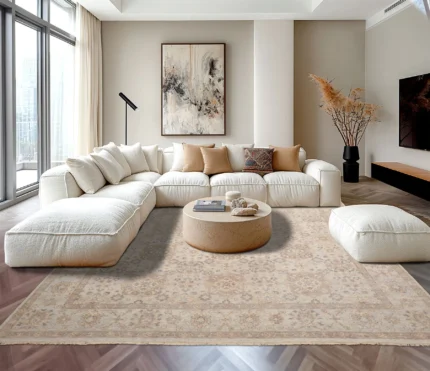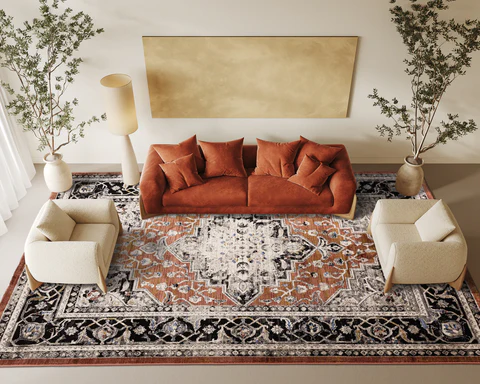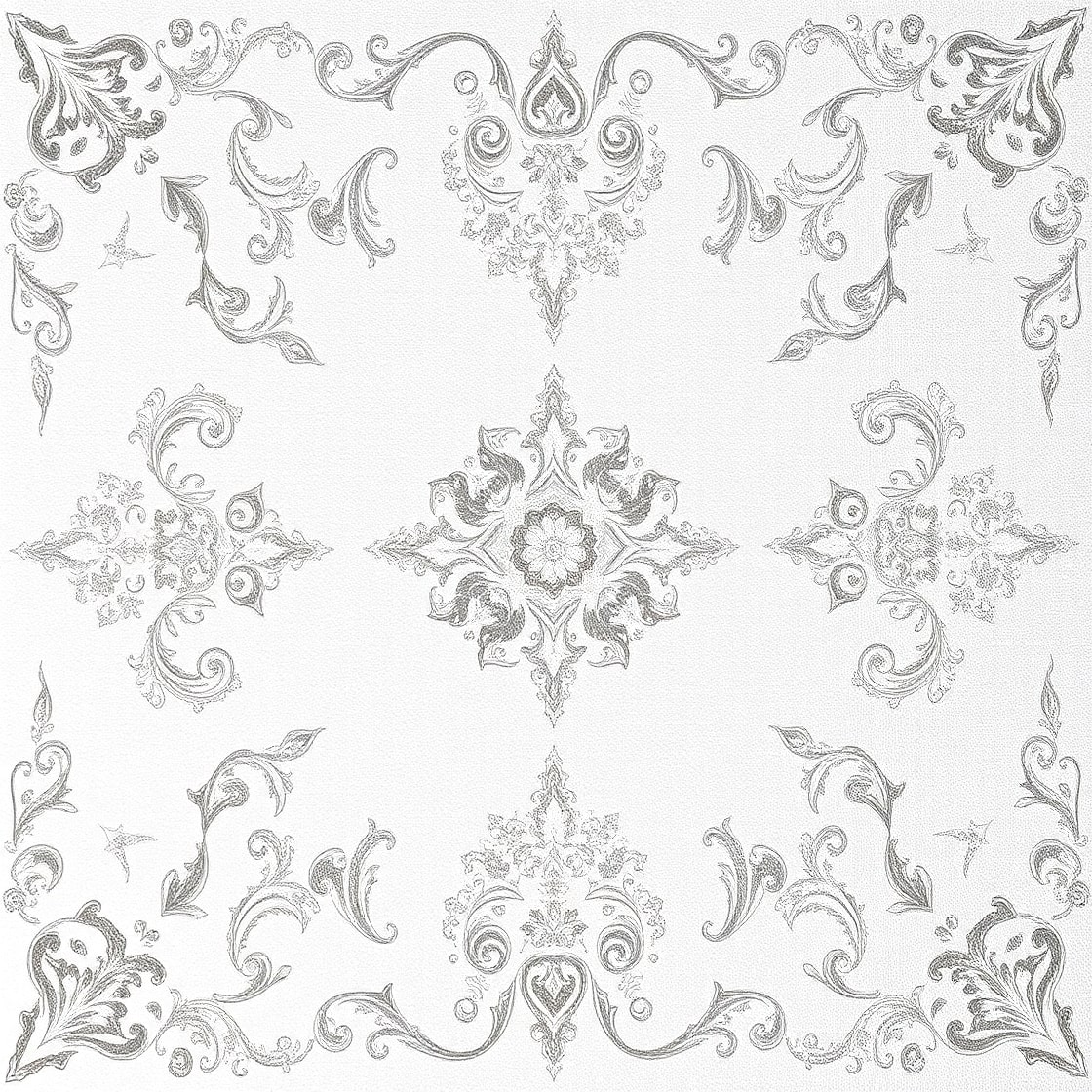Top Rug Placement Mistakes and How to Avoid Them
A well‑placed rug does more than cover floor space—it anchors a room, ties together furniture, and enhances your décor.

Avoid these common rug placement mistakes to make your home feel cohesive and stylish:
1. Using a Rug That’s Too Small
A rug under a coffee table only? That floating “postage stamp” effect is a major design trap. To anchor seating areas properly, ensure your rug is large enough so at least the front legs of your sofa and chairs rest on it. Designers often recommend leaving 3–8 inches of bare floor around the legs.
Too small = unbalanced and visually disconnected.
2. Neglecting Size in Dining Rooms
Rugs in dining spaces need extra room so chairs remain on the rug when pulled out. Aim for at least 60 cm (2 ft) beyond the edges of the table—typically an 8×10 to 9×12 rug for a 6–8 seat table.
Otherwise, you risk tripping hazards and constant rug‐chair collisions.
3. Misplacing Rugs in Bedrooms
A rug should softly land underfoot when you wake up—not be tucked at the end of the bed. Preferably, push the rug under the headboard, extending it past the sides. In smaller bedrooms, position at least the bottom two thirds of the bed on the rug.
4. Skipping a Buffer Around Walls
Rugs aren’t meant to reach wall‑to‑wall. Leave 20–60 cm (8–24 in) of visible flooring around it. This creates a polished border and prevents rugs from feeling cramped .
5. Ignoring Furniture Consistency
In seating areas, be consistent: either all front legs go on or off the rug. Mixing it up can break visual flow and look messy. Choose the style that best suits your space and stick with it .

Quick Rug Placement Guide
| Room | Rule of Thumb | Recommended Rug Size |
|---|---|---|
| Living Room | At least front legs on rug | Leave 8–24 in floor border |
| Dining Room | Chairs stay on when pulled | 8×10 or 9×12 for 6–8 seater |
| Bedroom | Under bed, soft landing pad | Rug extends past bedside tables |
Why It Matters:
Creates visual unity – a properly sized rug links furniture for a cohesive look
Improves comfort & safety – avoids partial chair placement and tripping
Enhances spatial perception – creates a sense of balance and room flow
Tips to Avoid Mistakes:
Measure before you shop—use painter’s tape to visualize placement .
Consistency matters—decide on “all legs on” or “all off.”
In open layouts, consider one large rug to define zones or use matching smaller rugs for cohesion.
Related Posts
Why Rugs are Essential for Home Decor
-
Posted by
 dan
dan - 0 comments
Choose the Best Size Rug for Your Room
-
Posted by
 dan
dan - 0 comments
